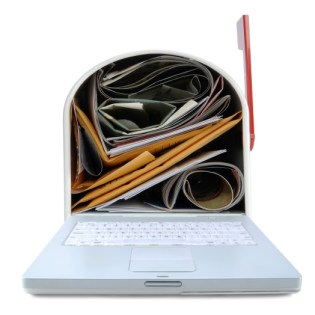 As a journalist, I am the recipient of a lot of PR. A lot. On an average day, I get somewhere between 100 and 120 emails from people who want me to cover their campaign, product, statement, report, event, or info-f’ing-graphic.
As a journalist, I am the recipient of a lot of PR. A lot. On an average day, I get somewhere between 100 and 120 emails from people who want me to cover their campaign, product, statement, report, event, or info-f’ing-graphic.
A startlingly large proportion of the PR emails I receive are grossly incompetent — a waste of my time and inbox space. This has become so irritating that I periodically respond to individual emails with exasperated hectoring. That hasn’t proven particularly effective, so I’m now taking my rant advice public.
Perhaps you don’t think of yourself as working in public relations. You might be in “communications” or “outreach,” possibly something “strategic,” or you might just be an academic or researcher promoting your own work. But if you want to use me to reach the public, you are operating as a PR person. You want to use my platform, voice, and authority to get your thing to a reasonably large and influential audience. You want something from me.
So why do you make it so hard for me?
I’m not a PR expert. I assume there are studies about what works and doesn’t. I can only testify from my own perspective as a recipient of these efforts (one who’s heard similar things from many other journos). And for me, finding relevant, actionable information in my inbox is like looking for a Prius at an API meeting.
There are a handful of folks who are doing PR right, and I appreciate their work. For the rest, here are some pointers.
1. Always include a $%*^! link.
An email without links is inert. There’s only one thing I could do with it: write a story on the subject and quote the email. I’m not going to do that 100 times a day — maybe once. But I have more ways of reaching the public than my blog. I tweet. I put links on Facebook. I do these things many, many times a day. But you can’t benefit from this unless you send me a link.
It’s not difficult or expensive to post things on the internet these days. Even if all you’re sending is a statement by your politician or group, put the statement online first and send a link along with the statement. Even if all you’re sending is a short text introduction to a report, put the short introduction online first and send a link with it. If you’re telling me about a bill or a campaign, link to the bill or the campaign. If you’re telling me about something that happened, link to a story or video about the thing that happened.
Whatever you’re promoting, think about it this way: If someone were to tweet about this, what link would I want included? That’s the key link. Make damn sure it’s in your email.
2. Don’t bury the lede in an attachment.
I have gotten emails that say, “See the attached statement from [group I immediately hate]!” And there’s a PDF attached.
Blarg. You’ve just wasted two seconds of my life. Probably more, if you count the heart damage from PR rage.
Why would you make me work to get the information you’re trying to promote? The nut of your message — what you want me to know — should be at the top of the email, in text, and it should be short. Tell me why I, busy journalist guy, should care about what you have to say. If you are publicizing a report, you can attach the report as a PDF. (Never attach a DOC or [convulsion] DOCX file. Ever.) If you’re publicizing something I can see, please, attach a picture. (Send the picture as a separate file; do not embed it in a PDF or [convulsion] a DOC file.)
Above all, never put your main message in an attachment. That’s extra work for me and a quick road to the trash file for you.
3. Know what I do.
In eight years of blogging at Grist, I have never once written about a razor, yoga pant, or bathroom cleaner. Yet I am deluged with emails about this kind of sh*t. That’s because Grist is on some Evil PR Master List as “green” and so anyone with the misfortune of having a Grist email address gets spammed whenever some hack PR shop gets their hands on a water bottle with a recycled cap.
Probably four out of five PR emails I get are about things I have never written about and will never write about. It immediately marks the sender as a hack who doesn’t care about wasting my time.
The most effective PR people I know are good because they know the space. They know the journalists who cover their area. They know what topics are current. They follow relevant people on Twitter. They (brace yourself) read what relevant people write. They know the interests and predilections of the people to whom they’re reaching out.
Knowing the space allows them to be genuinely helpful to journalists. And believe me, journalists are pathetically grateful to run across helpful PR people.
4. Talk to me like an adult.
There is a certain format and vocabulary common to PR emails, a kind of strained, pro forma enthusiasm. “As someone who writes about green, we know you’ll be excited to hear that our Spork now contains 10% recycled plastic!”
Nobody is genuinely excited about a Spork, no matter how “green.” And nobody talks like that. Sure as hell nobody who knows anything about me talks to me like that. I pay more attention and read more closely when I am spoken to like a thinking adult.
5. Give me background.
No good journalist is going to take you at face value. Even if I like your story/angle/report/product, I’m going to try to get some context and verify your claims. Make that easier for me! Back up your claims with links to reputable sources. Include some excerpts from those reputable sources.
The easier you make it to take you seriously, the more seriously you will be taken.
6. Do not call me.
I hate the telephone. I know lots of bloggers and journos who feel the same way, especially the younger ones. I’ll call people for information when I need to, but I really don’t like to be called and I really don’t like to be pitched over the phone.
And you know what I like very least of all? Being called by someone who’s “following up on an email.” This is apparently something they teach in PR school, because it happens constantly.
Guess how many times I’ve seen an email I wanted to do something with, forgotten about it, and then been helpfully reminded by a phone call? Zero, that’s how many. Zero times.
I get so many PR calls that I don’t even answer my office phone anymore. I let it go to voicemail, which gets emailed to me. And then, if I’m interested, I’ll send a damn email like normal people.
7. Make it easy for me to escape you.
If you’re sending to a list, include a one-click means for me to unsubscribe from the list. (One click. Not two.) Always, always include some way that I can easily tell you I don’t want news on X subject, or I don’t want news from you on any subject. How many emails do I just resignedly keep receiving because it seems like too much of a hassle to get off some list? Enough to make me hate the PR profession, not quite enough to make me want to fill out a form.
8. Comic sans and other “playful” fonts, colored text, colored backgrounds, animated GIFs, huge embedded images.
Don’t.



